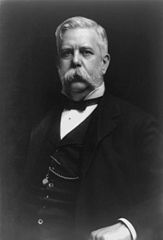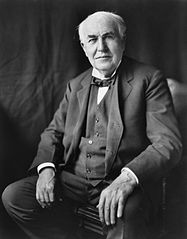Home
The War of the Currents was a struggle that radically shaped our modern era. In the late 19th century, George Westinghouse and Thomas Edison became bitter rivals in a fight over whether power transmission would be accomplished with alternating current (AC) or direct current (DC). AC power systems transmit high voltage energy at low currents, while DC power systems transmit low voltage energy at high currents. One of the disadvantages of DC power transmission is that to carry large currents the transmission wires must be very thick, and they have to be thicker the longer the line is. Therefore, the practical maximum range of a DC power station was only about two miles, making DC power transmission impractical for energizing the country.
Today, almost all power is transmitted with AC systems. To deal with the high voltages used to transmit the energy long distances, a device called a transformer is used to step down the voltage for use in the home (in the U.S., the standard for a wall outlet is 120 Volts AC at 60 Hertz frequency). While AC is said to have won the War of the Currents, DC is by no means unused. DC is, among other things, used to charge batteries and powers nearly all of the electrical devices we use today (such as the computer you are reading this on). But when it comes to the distribution of power via the grid, AC power distribution is by far the superior method.
George Westinghouse Thomas Edison

